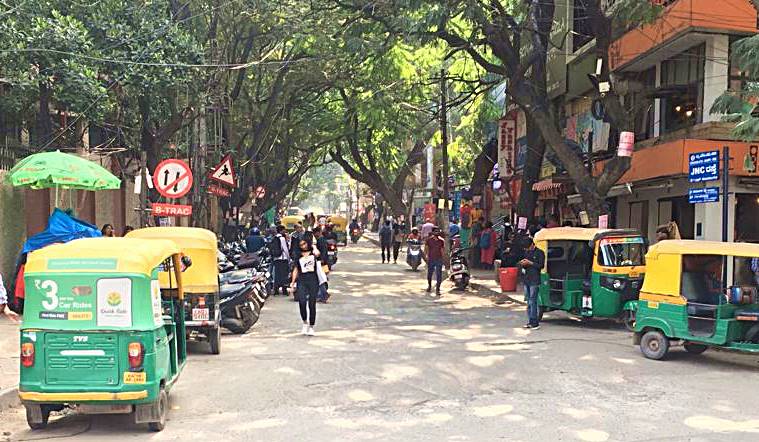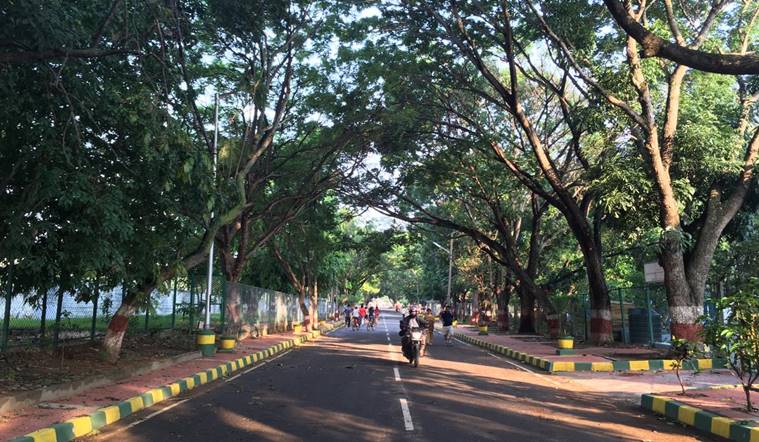Stay updated with the latest - Click here to follow us on Instagram
Bengaluru tree census to resume in a month, MoU to be signed with IWST
The BBMP Thursday submitted an undertaking to the Karnataka High Court stating that the tree census will commence within a month's time.
 The BBMP Thursday submitted an undertaking to the Karnataka High Court that tree census would begin within a month’s time. Express Photo/Ralph Alex Arakal
The BBMP Thursday submitted an undertaking to the Karnataka High Court that tree census would begin within a month’s time. Express Photo/Ralph Alex Arakal
After facing several delays, the Bruhat Bengaluru Mahanagara Palike (BBMP) Saturday said that the tree census exercise in Bengaluru will resume within a month. Confirming the development BBMP Commissioner BH Anil Kumar said that the civic body is now awaiting a final nod from the state government to further the signing of the Memorandum of Understanding (MoU) with the Institute of Wood Science Technology (IWST).
“According to the proposal, IWST will bring several experts and voluntary organisations working on environmental issues and with expertise in the subject under a single umbrella to help complete the census in a comprehensive manner. The census would require three years for completion. The process will begin soon after we get the government approval for the same,” the BBMP Commissioner said.
 Bangalore South MP Tejasvi Surya and South Indian actor Samyukta Hornad in a recent plantation event in the city. (File)
Bangalore South MP Tejasvi Surya and South Indian actor Samyukta Hornad in a recent plantation event in the city. (File)
Tree census to resume in 30 days by IWST
The BBMP Thursday submitted an undertaking to the Karnataka High Court stating that the tree census will commence within a month’s time. As per the submission the research institute under the Ministry of Environment, Forest and Climate Change will be entrusted with the exercise. A division bench comprising Chief Justice Abhay Shreeniwas Oka and Justice SR Krishna Kumar has sent a notice to IWST asking it to produce the details of a phase-wise plan to conduct the exercise.
The court also warned the officers of contempt proceedings pointing out that the civic body has failed to comply with directions issued in August, to begin the exercise within a fortnight. The Karnataka HC has adjourned the further hearing till November 13 by which the BBMP has been directed to submit a report on the progress of the tree census.
Why is the tree census required?
A proper tree census, which would quantify the biodiversity of Bengaluru, has been a constant demand among environmentalists and conservationists in the city for over a decade now. The Karnataka Preservation of Trees Act (1976) recommended such an exercise, which has also been repeatedly pointed out by the Karnataka High Court.
Renowned ecologist and Professor of Sustainability at Azim Premji University Dr Harini Nagendra highlights that the census has relevance in the present scenario as the city is “tremendously loosing” its green cover. “Such an exercise would help the authorities identify which species would survive better even in case of compensation planting for those trees cut for development of infrastructure,” she said.
 The most commonly distributed tree species in Bengaluru include Rain Tree, Copper Pod, African Tulip, and Pongamia (Honge in Kannada). (Representative Image)
The most commonly distributed tree species in Bengaluru include Rain Tree, Copper Pod, African Tulip, and Pongamia (Honge in Kannada). (Representative Image)
Citing the sample studies conducted in 2007-08, Dr Harini, author of ‘Nature in the City: Bengaluru in the Past, Present, and Future’ said that in 150 short stretches in the city, 108 different species were recognised while as many as 80 species were recorded in parks situated in 127 different areas of Bengaluru. She added that a mass planting and stewardship exercise of 1 million trees conducted in the United States can be looked up to in finalising strategies in the city.
‘Generating public awareness to encourage tree-affinity important’
It is to be noted that mass plantation drives had been conducted in the garden city in 1981 under the leadership of then chief minister R Gundu Rao, who realised that felling of trees was becoming rampant.
“Teams used to go door-to-door taking public opinion on what species they would prefer to be planted in their vicinity. This helped build a bond to the saplings planted then, as citizens felt responsible for the survival and growth of each tree associated with them. Similar encouragement should be developed apart from generating awareness on the importance of sustaining a green cover to the present-day population of Bengaluru,” Dr Harini added.







